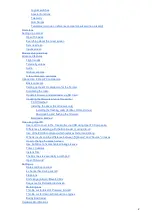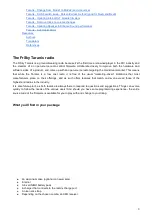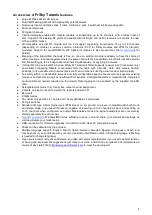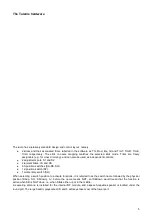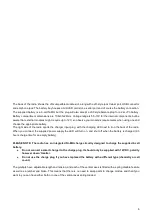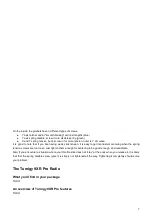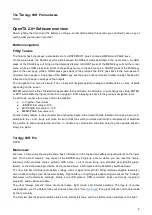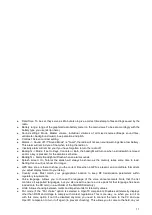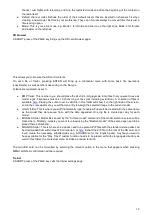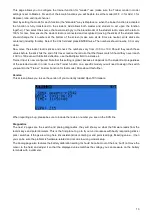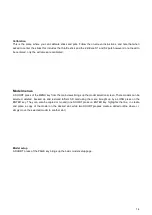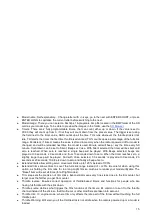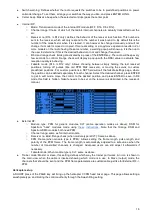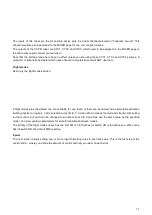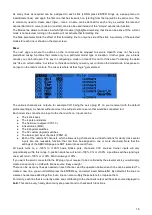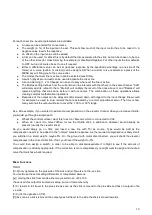
An overview of
FrSky Taranis
features
●
Large 212*64 backlit LCD screen
●
Quad ball-bearing gimbals with high quality potentiometers
●
Numerous input controls (4 sticks, 4 trims, 2 sliders, 2 pots, 8 switches), all freely assignable
●
60 model memories
●
32 logical channels
●
Internal telemetry-enabled RF module capable of transmitting up to 16 channels, with a refresh rate of
9ms. Supports the existing D8 protocol (useable with all D-type and VxR-II receivers) as well as the new
D16 and LR12 modes.
●
JR-compatible external RF module slot (no 6V supply) supporting transmission of up to 16 channels
(depending on module) in various common protocols (PXX for FrSky modules and PPM for 3rd-party
modules). Support for serial DSM2 for DIY Spektrum modules is also present (see the
for
details).
●
Mapping of the transmitted channels is free, so once an external module is added you have the choice of
either creating a redundant system where the same channels are transmitted via both internal and external
RF, transmitting up to 32 independent channels simultaneously, or anything in between.
●
Internal RF (and external RF when an FrSky XJT module is fitted) supports receiver lock (X receivers only)
and allows configuring failsafe conveniently from the radio with 3 modes: Hold, Stop pulses, Custom
positions (only available with X-series receivers, D and V-II series use the usual receiver button press).
●
Telemetry with 3 customisable screens and fully configurable speech announcements, supports existing
receivers and sensors as well as new Smart Port sensors. Configurable metric or imperial units. Integrated
audio variometer (sensor required on the model). Data logging can be enabled on the supplied microSD
card.
●
Selectable stick mode (1-4), totally free output channel assignment.
●
2 timers, values can be stored when the radio is powered off
●
64 mixers
●
9 flight modes
●
16 custom curves with 3-17 points each, freely definable x coordinates
●
32 logic switches
●
Standard JR-type 3.5mm trainer jack (PPM signal on tip, ground on sleeve, compatible with both mono
and stereo plugs, ring unused if present), capable of receiving up to 8 channels as input, and sending up
to 16 channels when configured as output. Master/slave mode and signal parameters are conveniently
stored separately for each model.
●
Windows/Mac/Linux software to save, edit and share your models and settings as
well as simulate your model setup
●
USB connection for firmware upgrades, microSD card and OpenTX companion access
●
Sticks can be calibrated by the end user
●
Multiple language support: English, French, Italian, German, Swedish, Spanish, Portuguese, Czech, and
maybe yours if you contribute with your own translation file! (Radio comes in English language, reflashing
is needed to change language)
●
Open source community-driven firmware, so unlike with major manufacturers if you need a special function
or have good improvement suggestions just raise your voice, and don't be surprised if it's implemented a
couple of days later! Visit
4
Summary of Contents for OpenTX 2.0+
Page 41: ...41...
Page 47: ...Taranis Updating internal XJT module firmware 47...


